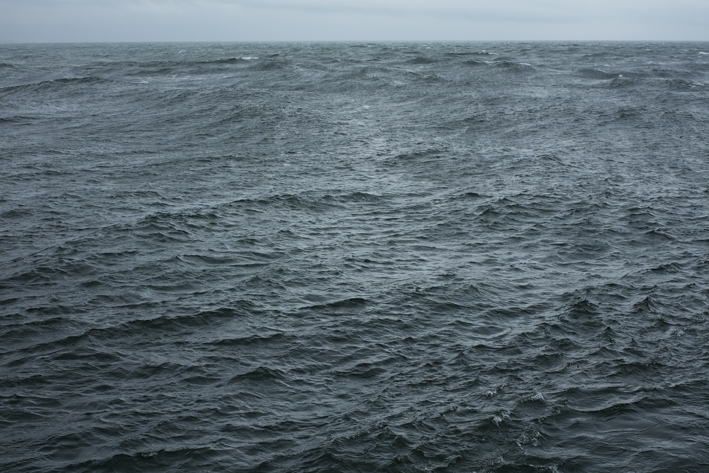Maureen Paley, London, 9 June – 7 August 2016
Just past the entrance to Maureen Paley, posters bearing the slogans of pro-EU lobby groups spread up the walls. At the end of the corridor ahead, the gallery has opened its backdoor into a courtyard where Wolfgang Tillmans’s own prereferendum poster campaign is on display. In blocky typeface occasionally underlaid with photographs, he reminds us to register and vote; and if we visit the accompanying website, we learn that posters can be ordered as T-shirts or downloaded to print at home.
When Tillmans’s exhibition opened, just before Britain voted to leave the EU, the gamble, clearly, was on a show that would become a paean to sloganeering. His slick designs would have testified to the power of art as a marketing tool, but instead they’re now a grim reminder of what happens when rightwing populism takes hold. Yet though Brexit casts a gloomy shadow, the posters are only a peripheral element of this wide-ranging show: across the gallery’s two floors Tillmans oscillates between a range of photography formats, and deftly moves across size, subject and medium. Downstairs, a giant seascape of the Atlantic Ocean (The State We’re In, A, 2015) sits alongside large-format interior shots of observatories (not yet titled, 2012/2014) and a series of smaller photographs documenting airport security controls (Wako Book 5 / Border Installation, 2016). The latter, featuring pages culled from a limited-edition book of the artist’s photographs, signals the continual process of revisitation that characterises his work; upstairs, he also includes pages from a 2015 special edition of Arena HOMME+ magazine devoted to his photographs of London during the 1980s.
Indeed, throughout the exhibition, Tillmans’s carefully constructed installations appear as if they are visual attempts to arrange and take stock of his thoughts, often through their temporary modes of display: in the upper gallery’s backroom, for example, a cluster of 30 photo portraits (portrait grid, 2016) are installed with tape, and feature the occasional famous face – Boy George, Frank Ocean – among anonymous sitters; alongside them, two large still lifes of plants hang from clips (Utilplanto a, 2011, and Palm tree, sun burst, 2015). In the adjacent room, however, Tillmans moves away from photography in the installation I refuse to be your enemy, 2 (2016). Sheets of blank paper are displayed on glass-topped wooden tables, and these, the press release informs us, are standard office paper sizes from Europe and North America.
When considered alongside the rest of the show, I refuse to be your enemy, 2 marks Tillmans’s shift from identity politics to that of borders and nationhood. His focus is drawn outward – to international waters, observatories and airports – but also, simultaneously, he homes in on specific locations: Fire Island (Fire Island, 2015), for example, or Bethnal Green (shit buildings going up left, right and centre, 2014). Here, the internationalism that characterises his work – and the life of the artist himself – emerges as the central subject. Through his macro and micro approach to place, Tillmans now provides an elaborate ode to the ‘glocal’.
This article was first published in the October 2016 issue of ArtReview.
